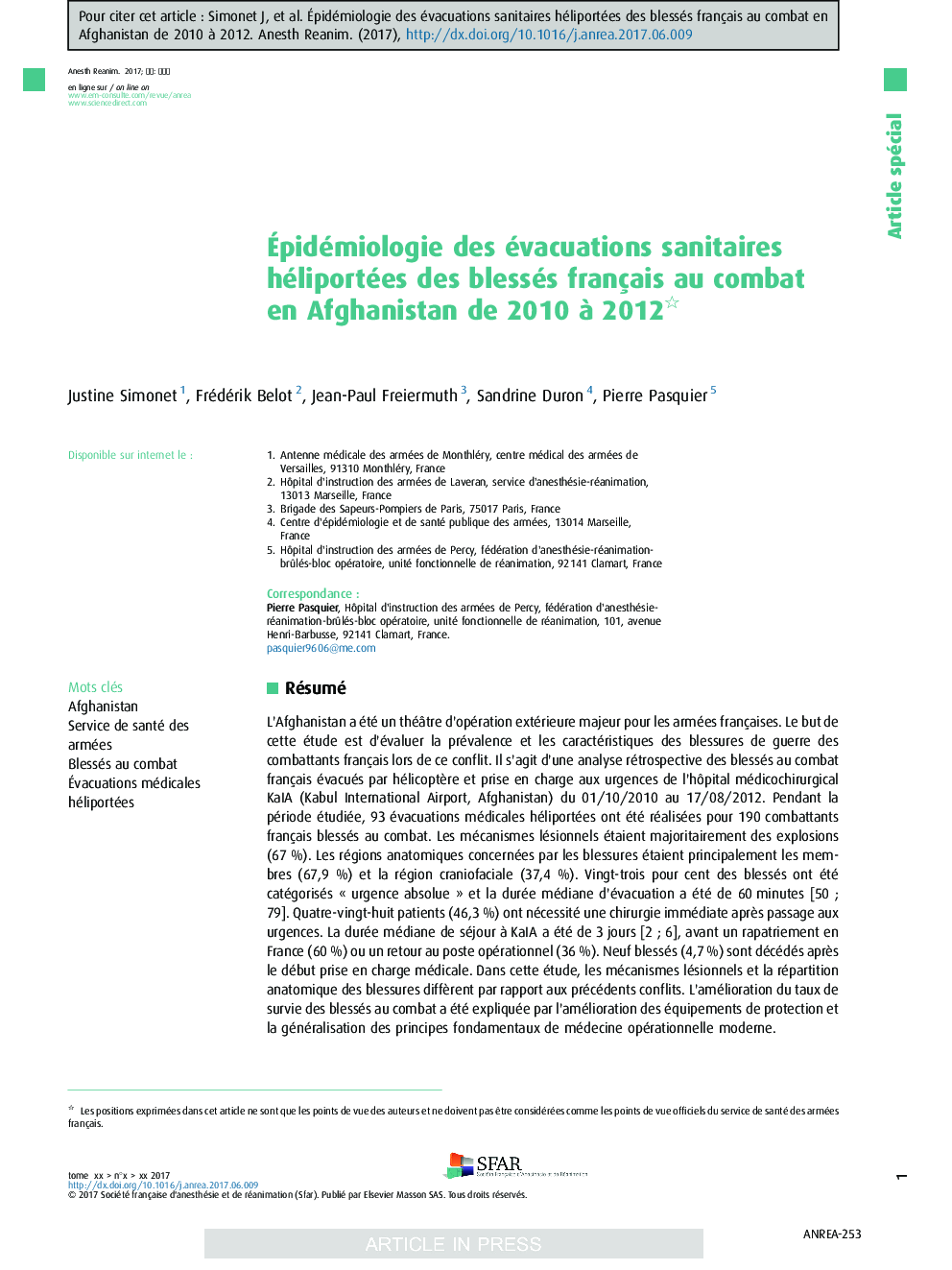| Article ID | Journal | Published Year | Pages | File Type |
|---|---|---|---|---|
| 5580473 | Anesthésie & Réanimation | 2017 | 6 Pages |
Abstract
Afghanistan was a major overseas campaign for the French army. The purpose of this study is to assess the prevalence and the characteristics of French combat casualties. It is a retrospective analysis of the French combat casualties, transported to the French military hospital (ROLE 3) in KaIA (Kabul International Airport, Afghanistan) by forward aeromedical evacuation. The study was conducted between the 01/10/2010 and the 17/08/2012. During the study period, 190 French soldiers were evacuated, with 93 forward aeromedical evacuations. Mechanisms of injury included mainly explosions (67%). Injuries were mostly located to limb (67.9%) and hand and neck (37.4%). The median length of evacuation was 60Â minutes [50; 79]. Twenty-three percent of casualties were categorised “absolute emergencies” (UA). Eighty-eight patients (46.3%) underwent emergency surgery after reaching the emergency department of KaIA. The median length of stay in KaIA ROLE 3 was 3Â days [2; 6], before strategic aeromedical evacuation toward France (60%) or return to duty (36%). 9 combat casualties (4.7%) died after reaching the medical treatment facility (died of wounds). In this study, mechanisms of injury and anatomical distribution of injuries differed from previous conflicts. The improved survival rate of battlefield casualty can be explained by the improvement in personal protective equipment and basics principles of modern combat medicine.
Related Topics
Health Sciences
Medicine and Dentistry
Anesthesiology and Pain Medicine
Authors
Justine Simonet, Frédérik Belot, Jean-Paul Freiermuth, Sandrine Duron, Pierre Pasquier,
